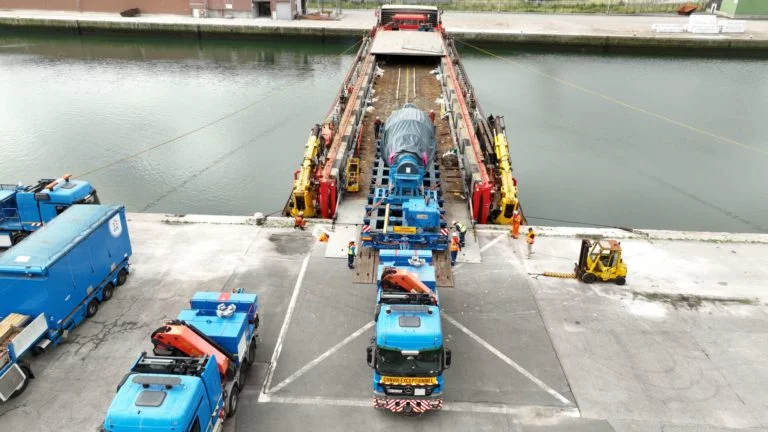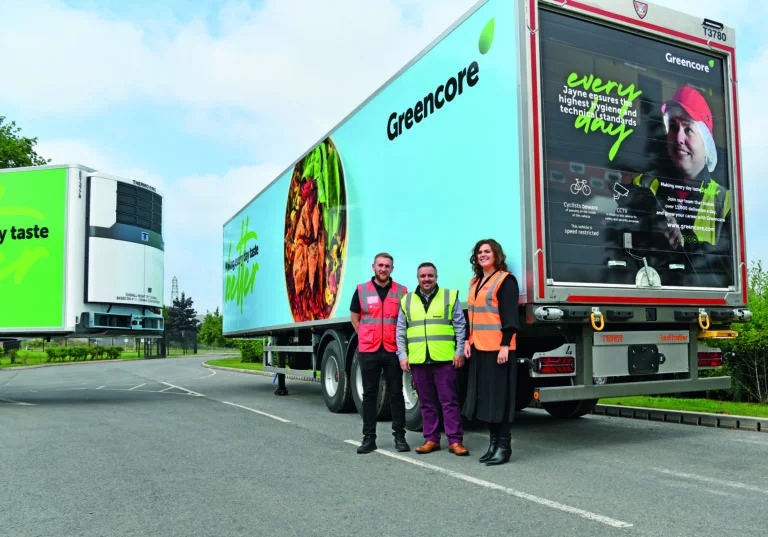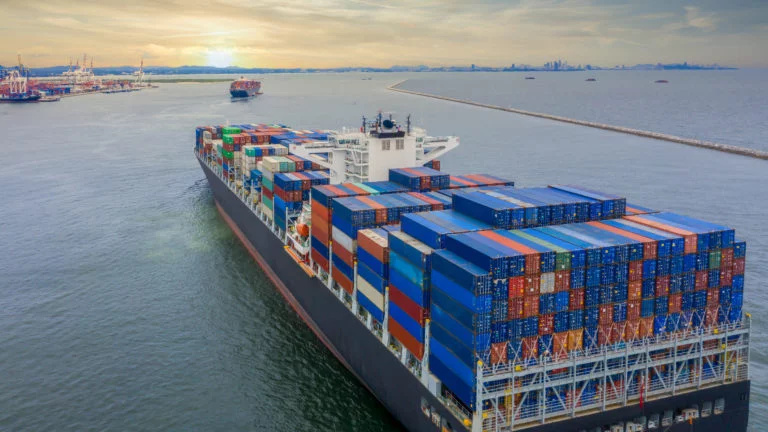Peter MacLeod talks exclusively with Siemens’ supply chain guru Alexander Tschentscher about how to develop a logistics landscape with robustness at its core.
As supply chains evolve under pressure from global disruptions, regulatory complexity and technological change, Siemens is pioneering a strategic shift by transforming its culture to build not just resilience, but robustness into its supply chain operations. At the recent DELIVER Europe event in Amsterdam, Alexander Tschentscher, Vice President Supply Chain Excellence and Head of Strategy – Supply Chain & Logistics at Siemens, delivered a compelling keynote that urged logistics professionals to “think strategic.” I followed up with Alexander to explore how his team is shaping Siemens’ future-facing supply chain and how businesses across the sector, particularly those with a strong manufacturing element, can draw from their approach.
Tschentscher’s responsibility can best be described as shaping the supply chain of the future within Siemens’ Smart Infrastructure operational company. As Head of Supply Chain Excellence and Programme Lead for Supply Chain Strategy, he is both the architect and driver of strategic direction across supply chain and logistics. His background is as broad as it is deep: before stepping into his current role, he held responsibility for logistics and procurement within Siemens’ Distribution Systems unit, part of the same Smart Infrastructure business. Earlier appointments in management consulting, commodity management, project management and logistics have shaped a leadership style grounded in cultural transformation and innovation. Creating something new has been a defining theme of his professional journey.
At Siemens, he is now responsible for strategically guiding a community of 4,000 supply chain professionals who move over 400,000 tonnes annually across a network of 160 warehouses serving industries where downtime can mean blackouts… or worse.
Strategy Over Firefighting
“Most supply chain professionals are firefighters,” Tschentscher (pictured, below with Peter MacLeod) tells me over a coffee in the Sustainability Lounge at DELIVER Europe. “They’re excellent at reacting, at solving urgent problems, managing delays, tackling disruptions.”

But can organisations sustain that mode of operation for much longer in today’s geopolitical landscape? From COVID-19 and blocked canals to cyber threats and climate regulations, supply chains are no longer disrupted occasionally, but constantly. The traditional crisis-response playbook is obsolete. What Tschentscher advocates for instead is a shift in mindset: embedding strategic thinking deep into supply chain culture.
At Siemens, that shift is underpinned by a development framework rolled out across its supply chain organisation which is more than just about sending employees on a training course. It’s about recalibrating the organisational DNA. “We created a learning journey,” he explains. “We begin with self-assessment, followed by tailored learning tracks, expert deep-dives, and finally a strategy boot camp that instils a clear understanding of vision, mission, and operational alignment.” The result is that every professional in the chain is empowered to think ahead, not just act fast.
From Resilience to Robustness
The dominant language in supply chain management has shifted toward resilience, a topic that is brought up in almost every conversation I have with a supply chain expert. But Tschentscher challenges this, arguing that resilience, though necessary, is reactive by nature. He offers a more aspirational goal: robustness.
“Resilience is surviving the storm,” he says. “Robustness is building the structure so the storm doesn’t destroy you in the first place.”
This distinction is personal. Alexander, a cancer survivor, likens resilience to enduring chemotherapy: high cost, high sacrifice. Robustness, in contrast, is about preventing recurrence: designing systems that avoid the crisis altogether. Translated into supply chain terms, it means not just preparing for the next disruption, but developing systems that can absorb and adapt without burning out its people.
“We put people under pressure. First it’s urgent, then very urgent, then extremely urgent. Eventually, the pressure becomes unsustainable,” he warns.
Four Forces Shaping the Future
At the heart of Siemens’ strategy are four macro-level forces that are redefining supply chains across industries:
- Artificial Intelligence (AI): No longer a distant concept, AI is already being applied to processes from forecasting and scheduling to supplier negotiation. But Tschentscher cautions that AI is not a magic wand. “Too often we see AI being used to cover poor data quality or patch up weak processes,” he says. “The real value comes when AI is intentionally embedded into specific value chain elements with clear roles for both humans and machines.”
- Regulation and Administration: The shift from globalisation to regionalisation has created an era of regulatory complexity. Tschentscher notes that tariffs, for example, are fundamentally reshaping supply chain operations. Companies such as Siemens have had to rethink their global sourcing strategy, pivoting towards localisation in response to political and regulatory demands.
- Workforce Evolution: Generations X, Y and Z bring new expectations such as flexibility, purpose, and digital fluency. But they’re also hesitant to enter the traditionally high-pressure world of logistics. It’s not just about offering jobs, Tschentscher believes, but redefining what supply chain careers look like and empowering people to work strategically and with purpose.
- Cascading Sustainability: While ESG was once a top-down initiative, it’s now non-negotiable, often tied to compliance and investment criteria. Sustainability has become more than a mission, it’s a regulatory threshold. Siemens is integrating sustainability directly into its logistics processes, from circularity planning to emissions-reduction in transport and warehousing.
Industrial Supply Chain Under Pressure
Whereas much of the DELIVER Europe event focused on consumer and retail logistics, Siemens’ industrial supply chain brings unique challenges. Its Smart Infrastructure division serves critical industries – power grids, building automation, and energy systems – with typically low- and medium-voltage products. They are typically long-lifecycle and high-stakes products such as switches and control panels for hospitals, factories and nuclear facilities.

This means Siemens can’t just pivot to new suppliers or platforms at will. “We operate in what I call a world of certification,” Tschentscher explains. “If a part is unavailable, we can’t just source another from Temu or Amazon! These components protect systems and lives. We need absolute certainty in quality and compliance.”
This constraint adds complexity, but also highlights the importance of long-term supplier partnerships, supply chain visibility, and robust risk management. AI cannot simply be plugged in. With the experience of Marks & Spencer front-of-mind at the time of the interview, Tschentscher tells me that Siemens uses a dedicated internal layer for generative AI to ensure cybersecurity and compliance, particularly sensitive in industrial applications. “We are careful, yes, but we’re not passive,” he stresses. “We are applying AI, but in a secure way.”
Enablement Culture
For Tschentscher, technology alone is not enough. “We can give people a Formula One car but we don’t always ask whether they have a driving licence,” he quips. Culture, in his view, is the differentiator between implementation and transformation.
This is where Siemens’ investment in education through its “Logiversity” learning tracks and widespread university partnerships pays off. Siemens trains for strategy and decision-making. For the supply chain professionals in this global powerhouse business, it’s not just about knowing the tools, it’s about knowing when and why to use them.
Cultural enablement also means acknowledging human limitations. When Tschentscher travelled to China, for instance, his team encountered regulatory blocks on Western digital tools – such as ChatGPT and Gamma – they’d relied on to deliver work efficiently. “That became a demotivation issue,” he notes. “Performance suffers when your digital toolbox disappears.” Preparing employees for adaptive thinking, not just operational execution, is therefore critical.
A Complex Future
So what does the future look like? For Siemens and for many others in the sector, it’s likely to be a hybrid of human intuition and machine intelligence, enabled by strategic clarity and cultural resilience. “For me, the main topic is to think about your supply chain, the elements you have, and which part of this do you want to integrate the AI long-term,” Tschentscher says. “And if you communicate it openly, I think this is exactly what the workforce must do.”
For other businesses with logistics functions at their heart, the message is clear: don’t wait for the next disruption to redesign your supply chain. Start now. Think strategically. Build a culture where strategic thinking is not the preserve of the boardroom, but a daily habit at every level of the organisation.
Because, as Tschentscher puts it: “If you don’t have a strategy, you’ll become part of someone else’s.”














